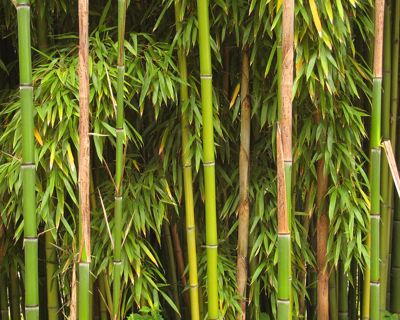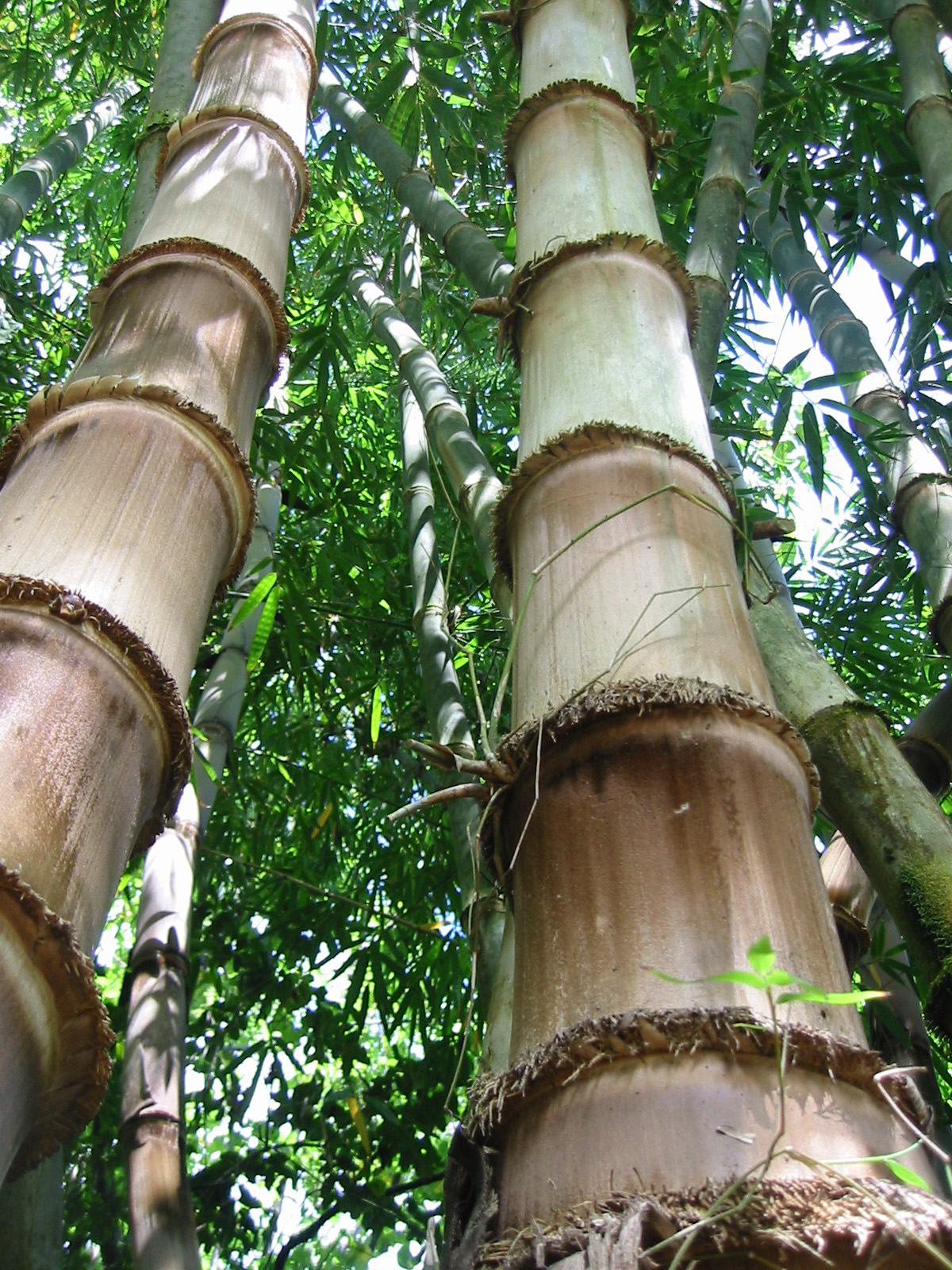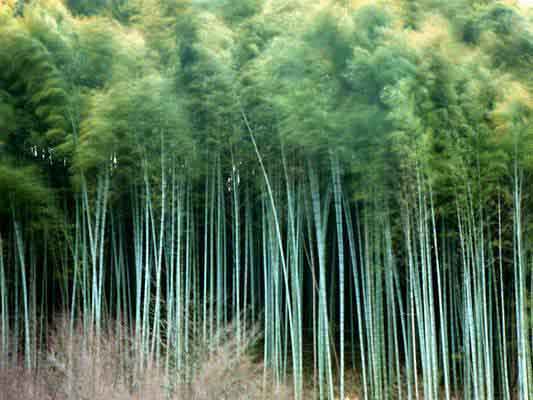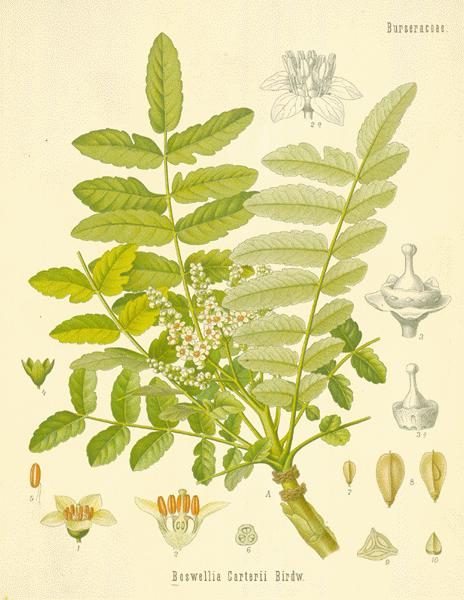The normal physiological functions of plants are disturbed when they are affected by pathogenic living organisms or by some environmental factors. Initially plants react to the disease causing agents, particularly in the site of infection. Later, the reaction becomes more widespread and histological changes take place. Such changes are expressed as different types of symptoms of the disease which can be visualized macroscopically. As a result of the disease, plant growth in reduced, deformed or even the plant dies.
When a plant is suffering, we call it diseased, i.e. it is at ‘dis-ease’. Disease is a condition that occurs in consequence of abnormal changes in the form, physiology, integrity or behaviour of the plant. According to American Phytopathological Society (Phytopathology 30:361-368, 1940), disease is a deviation from normal functioning of physiological processes of sufficient duration or intensity to cause disturbance or cessation of vital activities. The British Mycological Society (Trans. Brit. Mycol. Soc. 33:154-160, 1950) defined the disease as a harmful deviation from the normal functioning of process. Recently, Encyclopedia Britannica (2002) forwarded a simplified definition of plant disease. A plant is diseased when it is continuously disturbed by some causal agent that results in abnormal physiological process that disrupts the plants normal structure, growth, function or other activities. This interference with one or more plant’s essential physiological or biochemical systems elicites characteristic pathological conditions or symptoms.
This blog contain information about plants ,trees plus many interesting things about its physiology ,structure,anatomy and its pest and disease,,,enjoy
Blog Archive
Sep 27, 2011
Koch's Postulates
Koch was one of the original researchers into tuberculosis, in the 19th century. In an attempt to define what an infectious disease actually is, he formulated his famous postulates, which now bears his name.
Basically, if
1. An organism can be isolated from a host suffering from the disease
and
2. The organism can be cultured in the laboratory
and
3. The organism causes the same disease when introduced into another host
and
4. The organism can be re-isolated from that host
then
The organism is the cause of the disease and the disease is an infectious disease.
There is an implicit assumption in step three, namely that the other host must have a genetic make-up that causes it to react to the organism in the same way as the original host.
Also, these steps do not apply to all infectious disease. Notably, the bacterium causing leprosy, Mycobacterium leprae, cannot be cultured in the laboratory. However, leprosy is still recognised as an infectious disease.
Labels:
Koch's Postulates
Sep 26, 2011
nematode extraction method
how to extract nematode from plant or soil sample :
I will talk about the funnel method
1- get a piece of cloth
2-place a toilet paper(tissue) over the cloth
3-place your sample on it . it can be soil or plants (cut it is small size)
4-Wrap it together.
5-you have a funnel ,add water to near the top.
6-place the sample on the funnel.and make sure that you cover the sample by the water.
7-wait 24-48 hours ,
I will talk about the funnel method
1- get a piece of cloth
2-place a toilet paper(tissue) over the cloth
3-place your sample on it . it can be soil or plants (cut it is small size)
4-Wrap it together.
5-you have a funnel ,add water to near the top.
6-place the sample on the funnel.and make sure that you cover the sample by the water.
7-wait 24-48 hours ,
8-open the funnel from bottom and take the first 4 or 5 ml of wter that contain the nematode.
that was -in short- one method of extracting nematode.
later i will tell you how to count the nematode
Sep 25, 2011
Alternaria on plant
Spores (conidia) of Alternaria
Some species of Alternaria are parasitic on living plants and cause early blight of tomato and potato . When Alternaria attacks the host leaf, it produces a series of concentric rings around the initial site of attack. This gives a "target spot" effect that is associated with early blight
Sep 22, 2011
Sep 19, 2011
Plant cell and tissue culture
Plant cell and tissue culture
Many procedures in plant biotechnology depend on the ability to manipulate and grow plant cells in culture. Sometimes it is possible to generate new kinds of plants by such manipulations. Mutations in individual somatic cells would often go unnoticed. This somatic variation can be uncovered by culturing and regenerating new plants from the cells of a plant. This is called "somacloning". Cell walls can be stripped from cells with digestive enzymes to produce protoplasts. Protoplasts of different species can be mixed together and encouraged to fuse with special solutions (often containing polyethylene glycol). In this way "somatic hybrids" can be formed that might be difficult or impossible to get by conventional hybridization:
Brassica leaf protoplasts
Protoplasts are very delicate, but can often be cultured and will develop new cell walls. Then it may be possible to encourage embryo development (somatic embryogenesis) and the regeneration of new plants.
Genetic manipulation
Further development of biotechnology involves the ability to put new genes into plants, creating transgenic organisms (often called GMOs, genetically manipulated organisms). One procedure for this involves direct injection of DNA into a plant cell:
A much more common technique uses special strains of the crown gall bacterium, Agrobacterium tumefaciens. This organism injects a circular piece of DNA, or plasmid, into a host plant cell as part of its normal infection process. This plasmid can get integrated into the host DNA and then passed on through mitosis and meiosis to future generations.
The plasmid in wild-type Agrobacterium causes tumor development in plants. Gene transfer is accomplished using "disarmed vectors", plasmids that have been modified by deletion of the genes promoting tumor development. The circular DNA of the plasmid can be opened using restriction enzymes and a gene construct inserted to reclose the circle. Agrobacterium does not infect all plants. Another general method of gene transfer is particle bombardment: tiny metal particles are coated with DNA and fired into plant cells or tissue using a bullet or a blast of compressed air:
Whatever method is used genes are introduced only into a few cells and it is necessary to sort out the few transgenic cells from many that are unchanged. The most common way of doing this is to include a "reporter" gene for antibiotic resistance in the DNA construct. Also it is necessary to include a promoter so that the genes will be expressed in their new environment. A promoter from cauliflower mosaic virus is commonly used because it causes a high rate of transcription of mRNA from the introduced genes. The transformed cells or tissue will be cultured on a medium containing an antibiotic, such as kanamycin and only the cells transformed with the whole construct will survive. Because they express the gene for antibiotic resistance they are also likely to contain the other gene in the construct.
Finding genes
The techniques of genetic manipulation have become almost routine, but a major problem has been to know what genes to insert. Every eukaryotic cell contains many thousand genes and each is structurally complex:
In addition to the promoter, already mentioned, the DNA sequence usually contains non-coding regions, or introns among the coding sequences, or exons. Transcription starts produces a primary mRNA transcript that is edited to remove the intron segments. A poly-adenine tail is added so that the mRNA will be recognized by a ribosome and used to direct protein synthesis. Translation will start at a special methionine codon (AGU) and ends at a stop codon (UAG). Because of the difficulties of working with genomic DNA researchers often look at the RNA produced by cells in order to find gene sequences. If a group of cells shows a particular phenotype, such as disease resistance, they must contain RNA coding for the protein causing the phenotype. It may be possible to isolate this RNA and use it to construct an artificial gene that can be put into another plant to make it resistant to the disease. DNA can be made from RNA using an enzyme from certain viruses called "reverse transcriptase". Usually it will be necessary to analyze the sequence of bases in the gene; then probes can be made from radioactive or fluorescent bases to match the sequence so that the gene can be detected as it is transferred from one organism to another:
complemetary sequence of probe binding to gene
Sections of DNA are often manipulated by cutting them with restriction enzymes. These are enzymes produced by certain bacteria that recognize and cut in particular base sequences in DNA:
Eco R1, an example of a restriction enzyme
If two different DNA molecules, such as a promoter and a gene are cut with the same restriction enzyme, they can be joined by DNA ligase to make a new construct:
The construct can be put into a plasmid vector in a similar fashion.
Genomics
Although it is difficult to work with genomic DNA, we can only understand how genes are regulated and work together by looking at the detailed structure of the chromosomes. That is why there is a major effort to decypher the complete DNA sequence of representative organisms from each of the kingdoms. The human genome project is expected to lead to medical advances. Arabidopsis thaliana (thale cress,a member of the Brassicaceae) was chosen for the plant genome project. Arabidopsis has and unusually small genome and is easy to grow in the laboratory. Many interesting mutants have been discovered and many of these have been located on particular chromosomes.
Many procedures in plant biotechnology depend on the ability to manipulate and grow plant cells in culture. Sometimes it is possible to generate new kinds of plants by such manipulations. Mutations in individual somatic cells would often go unnoticed. This somatic variation can be uncovered by culturing and regenerating new plants from the cells of a plant. This is called "somacloning". Cell walls can be stripped from cells with digestive enzymes to produce protoplasts. Protoplasts of different species can be mixed together and encouraged to fuse with special solutions (often containing polyethylene glycol). In this way "somatic hybrids" can be formed that might be difficult or impossible to get by conventional hybridization:
Brassica leaf protoplasts
Protoplasts are very delicate, but can often be cultured and will develop new cell walls. Then it may be possible to encourage embryo development (somatic embryogenesis) and the regeneration of new plants.
Genetic manipulation
Further development of biotechnology involves the ability to put new genes into plants, creating transgenic organisms (often called GMOs, genetically manipulated organisms). One procedure for this involves direct injection of DNA into a plant cell:
A much more common technique uses special strains of the crown gall bacterium, Agrobacterium tumefaciens. This organism injects a circular piece of DNA, or plasmid, into a host plant cell as part of its normal infection process. This plasmid can get integrated into the host DNA and then passed on through mitosis and meiosis to future generations.
The plasmid in wild-type Agrobacterium causes tumor development in plants. Gene transfer is accomplished using "disarmed vectors", plasmids that have been modified by deletion of the genes promoting tumor development. The circular DNA of the plasmid can be opened using restriction enzymes and a gene construct inserted to reclose the circle. Agrobacterium does not infect all plants. Another general method of gene transfer is particle bombardment: tiny metal particles are coated with DNA and fired into plant cells or tissue using a bullet or a blast of compressed air:
Whatever method is used genes are introduced only into a few cells and it is necessary to sort out the few transgenic cells from many that are unchanged. The most common way of doing this is to include a "reporter" gene for antibiotic resistance in the DNA construct. Also it is necessary to include a promoter so that the genes will be expressed in their new environment. A promoter from cauliflower mosaic virus is commonly used because it causes a high rate of transcription of mRNA from the introduced genes. The transformed cells or tissue will be cultured on a medium containing an antibiotic, such as kanamycin and only the cells transformed with the whole construct will survive. Because they express the gene for antibiotic resistance they are also likely to contain the other gene in the construct.
Finding genes
The techniques of genetic manipulation have become almost routine, but a major problem has been to know what genes to insert. Every eukaryotic cell contains many thousand genes and each is structurally complex:
In addition to the promoter, already mentioned, the DNA sequence usually contains non-coding regions, or introns among the coding sequences, or exons. Transcription starts produces a primary mRNA transcript that is edited to remove the intron segments. A poly-adenine tail is added so that the mRNA will be recognized by a ribosome and used to direct protein synthesis. Translation will start at a special methionine codon (AGU) and ends at a stop codon (UAG). Because of the difficulties of working with genomic DNA researchers often look at the RNA produced by cells in order to find gene sequences. If a group of cells shows a particular phenotype, such as disease resistance, they must contain RNA coding for the protein causing the phenotype. It may be possible to isolate this RNA and use it to construct an artificial gene that can be put into another plant to make it resistant to the disease. DNA can be made from RNA using an enzyme from certain viruses called "reverse transcriptase". Usually it will be necessary to analyze the sequence of bases in the gene; then probes can be made from radioactive or fluorescent bases to match the sequence so that the gene can be detected as it is transferred from one organism to another:
complemetary sequence of probe binding to gene
Sections of DNA are often manipulated by cutting them with restriction enzymes. These are enzymes produced by certain bacteria that recognize and cut in particular base sequences in DNA:
Eco R1, an example of a restriction enzyme
If two different DNA molecules, such as a promoter and a gene are cut with the same restriction enzyme, they can be joined by DNA ligase to make a new construct:
The construct can be put into a plasmid vector in a similar fashion.
Genomics
Although it is difficult to work with genomic DNA, we can only understand how genes are regulated and work together by looking at the detailed structure of the chromosomes. That is why there is a major effort to decypher the complete DNA sequence of representative organisms from each of the kingdoms. The human genome project is expected to lead to medical advances. Arabidopsis thaliana (thale cress,a member of the Brassicaceae) was chosen for the plant genome project. Arabidopsis has and unusually small genome and is easy to grow in the laboratory. Many interesting mutants have been discovered and many of these have been located on particular chromosomes.
Oman s Frankincense
The Frankincense Route in the Governorate of Dhofar, which was listed by UNESCO in 2000. The Route comprises the ancient cities of Al-Blaid and Shasr, Khuwr Rori, and Wadi Dooka. These locations collectively contributed to the flourishing of the frankincense trade for many centuries throughout the Middle Ages.
At the beginning of April, as soon as the temperatures start to rise, the frankincense gatherers cut the frankincense trees in many places. The first 'cut' is called the tawqii and consists of paring off the outer bark of the branches and trunk. This causes a milky-white liquid to ooze from the tree which quickly solidifies and is left in this condition for 14 days or so. The second 'cut' which follows this period, produces resin of an inferior quality and the real harvest begins two weeks after the second 'cut'. With this third 'cut' the tree produces frankincense resin of yellowish color which is sold commercially in the market.
At the beginning of April, as soon as the temperatures start to rise, the frankincense gatherers cut the frankincense trees in many places. The first 'cut' is called the tawqii and consists of paring off the outer bark of the branches and trunk. This causes a milky-white liquid to ooze from the tree which quickly solidifies and is left in this condition for 14 days or so. The second 'cut' which follows this period, produces resin of an inferior quality and the real harvest begins two weeks after the second 'cut'. With this third 'cut' the tree produces frankincense resin of yellowish color which is sold commercially in the market.
The 'cutting' of the frankincense trees calls for great skill. The harvest lasts for 3 months and the average yield of frankincense resin for one tree is around 10 kilos. The Governorate of Dhofar produces approx. 7,000 tones of frankincense annually
Omani frankincense, which is considered to be the finest quality in the world, is still much in demand in many countries. It is an important ingredient in the manufacture of incense which is burned on social occasions, in the manufacture of medicines, fragrant, powders, perfumes, candles as well as in halls of worship around the world.
Meristematic cells
Cells that synthesize protoplasm and produce new cells by division. They vary in form, size, wall thickness, and degree of vacuolation, but have only a primary cell wall
Drupe
Drupe
:
Fleshy fruit with hard inner layer (endocarp or stone) surrounding the seed. E.g. peach, plum, nectarine, apricot, cherry, olive, mango and almond.
Pome
Pome
plant diseases and fungi
About 85% of all plant diseases are caused by fungi. Therefore, on a statistical basis alone, you are likely to encounter fungal diseases much more often than those caused by other types of pathogens. We will now proceed to a description of the main characteristics of fungi.
Fungi include the molds and mildews that we are all familiar with in Florida.
At one time fungi were considered to be types of plants. Indeed, mycology, the scientific study of fungi, is still done today in botany departments. However, in modern biology, fungi are not considered plants. They are placed in their own Kingdom (Mycota, for the serious biologists out there), with equivalent status to the familiar Animal and Plant Kingdoms.
Sometimes, growth of fungi is so profuse that a large enough mass (mycelia - multicelled microscopic strands) will accumulate to be seen with the naked eye. A good example is the growth of the target spot fungus on this ripe tomato fruit.
Figure 1
Target spot on ripe tomato fruit.
Most of the time, however, careful examination with a microscope is needed to see fungi and ultimately identify them. Fungi consist of multi-celled microscopic strands. Often, spores, or the reproductive structures of fungi are readily visible, as seen in this photomicrograph of the fungus Botrytis.
Figure 2
It is the peculiar size, shape, coloration, etc. of these Botrytis spores that are most useful in identification of fungi, including those that cause plant disease.
Figure 3
Sometimes, we encounter important pathogenic fungi that do not readily form spores. A good example is the root-infecting fungus, Rhizoctonia, shown here.
We take note of the distinctive right-angle branching of the fungal threads (mycelia) in making an identification of Rhizoctonia.
Fungi include the molds and mildews that we are all familiar with in Florida.
At one time fungi were considered to be types of plants. Indeed, mycology, the scientific study of fungi, is still done today in botany departments. However, in modern biology, fungi are not considered plants. They are placed in their own Kingdom (Mycota, for the serious biologists out there), with equivalent status to the familiar Animal and Plant Kingdoms.
Sometimes, growth of fungi is so profuse that a large enough mass (mycelia - multicelled microscopic strands) will accumulate to be seen with the naked eye. A good example is the growth of the target spot fungus on this ripe tomato fruit.
Figure 1
Target spot on ripe tomato fruit.
Most of the time, however, careful examination with a microscope is needed to see fungi and ultimately identify them. Fungi consist of multi-celled microscopic strands. Often, spores, or the reproductive structures of fungi are readily visible, as seen in this photomicrograph of the fungus Botrytis.
Figure 2
It is the peculiar size, shape, coloration, etc. of these Botrytis spores that are most useful in identification of fungi, including those that cause plant disease.
Figure 3
Sometimes, we encounter important pathogenic fungi that do not readily form spores. A good example is the root-infecting fungus, Rhizoctonia, shown here.
We take note of the distinctive right-angle branching of the fungal threads (mycelia) in making an identification of Rhizoctonia.
Labels:
fungi plant diseases
How do fungi attack plants?
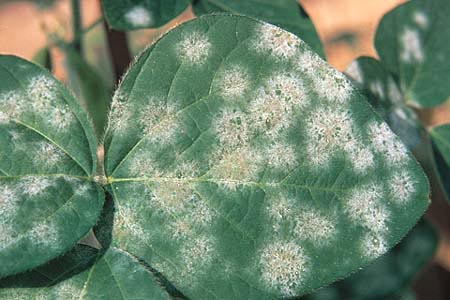 Fungi can't make their own food, so they must somehow get it from other organisms, living or dead. Some fungi can digest things like dead leaves and wood. Others set up mutually beneficial relationships with living plants But a third group discovered how to attack plants and steal food from them.
Fungi can't make their own food, so they must somehow get it from other organisms, living or dead. Some fungi can digest things like dead leaves and wood. Others set up mutually beneficial relationships with living plants But a third group discovered how to attack plants and steal food from them.  These 'pathogenic' or disease-causing fungi get inside the plant either by making a hole in its skin (epidermis), or by growing in through the plant's breathing holes (stomata). Then they either poison and kill the plant cells before absorbing food from them, or simply steal nutrients from the living cells.
These 'pathogenic' or disease-causing fungi get inside the plant either by making a hole in its skin (epidermis), or by growing in through the plant's breathing holes (stomata). Then they either poison and kill the plant cells before absorbing food from them, or simply steal nutrients from the living cells.
The spores of some fungi come through the air and attack leaves, making dead spots or even killing the whole leaf. Some fungi live in the soil and enter roots. They can either block the water-conducting cells or kill them, causing the plant to wilt. In many cases the plants is seriously damaged or may even die. So such pathogenic fungi can threaten our crops. The study of these fungi is called plant pathology.
Labels:
fungi
Sep 10, 2011
Sep 9, 2011
Djoa ,wild plant
Djoa ,wild plant
it use as traditional remedy for diabetes ,it has really bitter tast .I recommended using it ,unfortunately many people do not know anything about it.
Labels:
wild plant
Subscribe to:
Comments (Atom)






















